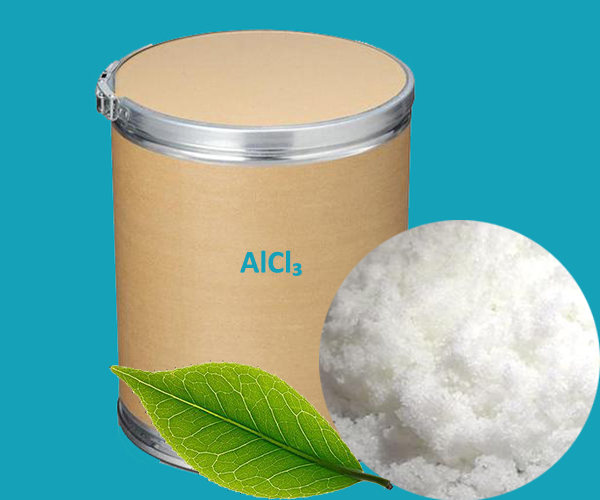Aluminum Chloride, also referred to as AlCl₃, is a crucial compound in the realm of inorganic chemistry. The compound appears as a white or pale yellow solid, depending on its purity, and has notable uses in various industrial and chemical processes.
Properties of Aluminum Chloride
Chemical formula : AlCl₃
Molar mass : 133.34 g/mol (anhydrous)
Appearance : white or pale yellow solid, very hygroscopic
Density : 2.44 g/cm³ (25 ºC), solid ; 1.31 g/cm3 (200 ºC), liquid
Melting point: 190 °C
Boiling point :177 °C
Solubility in water : reacts violently
Solubility in ethanol : 100 g/100 ml
Solubility in chloroform : 0.072 g/100 ml
Solubility in benzene : slightly soluble
Solubility : soluble in carbon tetrachloride, diethyl ether
Industrial Applications
1. The most prominent use of Aluminum Chloride is in the petrochemical industry, where it serves as a catalyst for Friedel-Crafts reactions, critical to the production of ethylbenzene and cumene, key ingredients in the production of styrene and phenol for polystyrene and bisphenol A, respectively.
2. It is also used in the manufacturing of aluminum metal, where it serves as a precursor.
3. Another significant application of Aluminum Chloride is in the production of rubber.
Pharmaceutical and Medical Applications
Outside of the industrial sphere, Aluminum Chloride has some important applications in pharmaceuticals and medicine:
1. It plays a role in the manufacturing of certain pharmaceutical products, where it is used as a catalyst in organic synthesis.
2. Aluminum Chloride finds application in antiperspirants due to its ability to interact with the sweat glands and obstruct sweat production.
3. Moreover, it can also be utilized in the treatment of hyperhidrosis, a condition characterized by excessive sweating.
 English
English Español
Español Português
Português Français
Français Deutsch
Deutsch Русский
Русский 中文
中文 日本語
日本語
